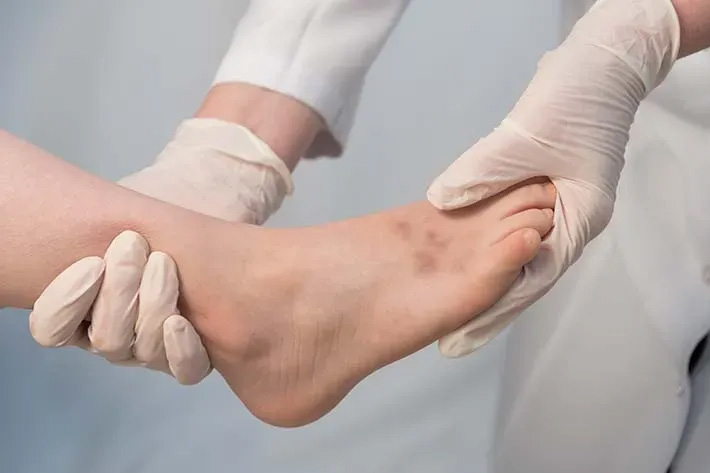An avulsion fracture is a type of bone fracture that occurs when a tendon or ligament attached to a bone pulls off a small fragment of the bone. It typically happens when there is a sudden, forceful contraction of the muscle, causing the attached tendon or ligament to pull away from the bone.
Avulsion fractures are more commonly seen in children and adolescents because their bones are still developing and are often weaker than those of adults. However, they can also occur in adults, particularly in individuals who participate in sports or activities that involve repetitive, explosive movements.
The most common sites for avulsion fractures are the ankle, foot, knee, hip, and elbow. The specific location depends on the muscle-tendon unit involved. Some examples of avulsion fractures include:
- Ankle: Avulsion fractures can occur at the base of the fifth metatarsal bone (Jones fracture) or at the posterior aspect of the tibia (medial malleolus) or fibula (lateral malleolus).
- Knee: The patella (kneecap) can be avulsed from the tendon of the quadriceps muscle.
- Hip: The pelvis bone can experience avulsion fractures at the attachment sites of the hip flexor muscles (e.g., rectus femoris).
- Elbow: The olecranon process of the ulna can be avulsed by the triceps tendon.
Symptoms of an avulsion fracture include pain, swelling, tenderness, and difficulty moving the affected joint. In some cases, there may be visible deformity or a gap at the fracture site. Treatment for avulsion fractures typically involves a combination of rest, immobilization, and rehabilitation exercises.
In less severe cases, conservative treatment measures such as rest, ice, compression, and elevation (RICE) may be sufficient. Immobilization with a cast, brace, or splint may be necessary to promote healing and prevent further displacement of the bone fragment. Rehabilitation exercises and physical therapy are essential to regain strength, flexibility, and range of motion once the fracture has healed.
In more severe cases where there is significant displacement or multiple bone fragments, surgery may be required to realign and stabilize the fracture. The surgeon may use screws, wires, or other fixation devices to hold the bone fragments in place during the healing process.
The recovery time for avulsion fractures varies depending on the location and severity of the fracture, as well as the individual’s age and overall health. It can range from a few weeks to several months. Following the prescribed treatment plan, including rest, rehabilitation exercises, and any necessary follow-up appointments, is crucial for a successful recovery.





